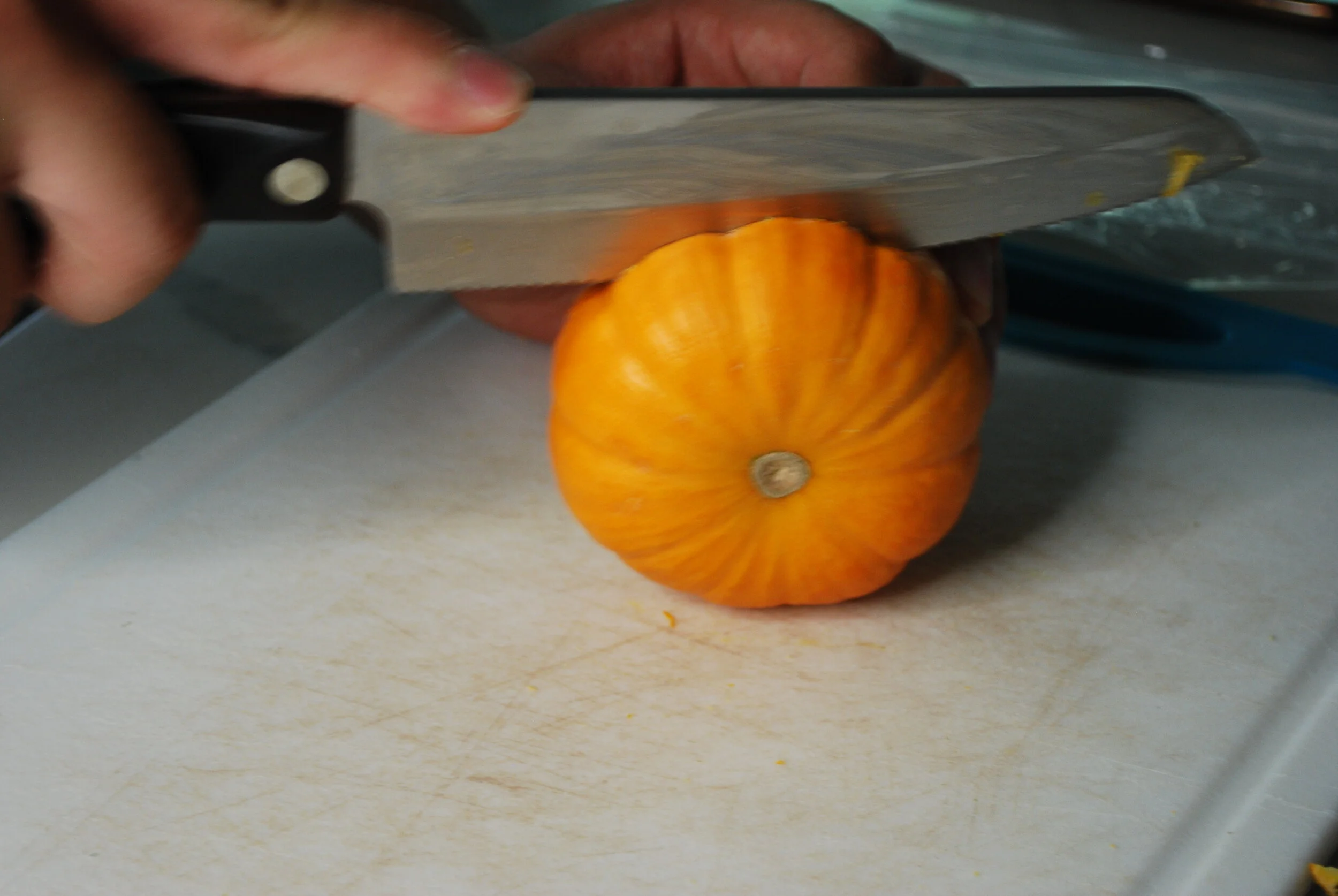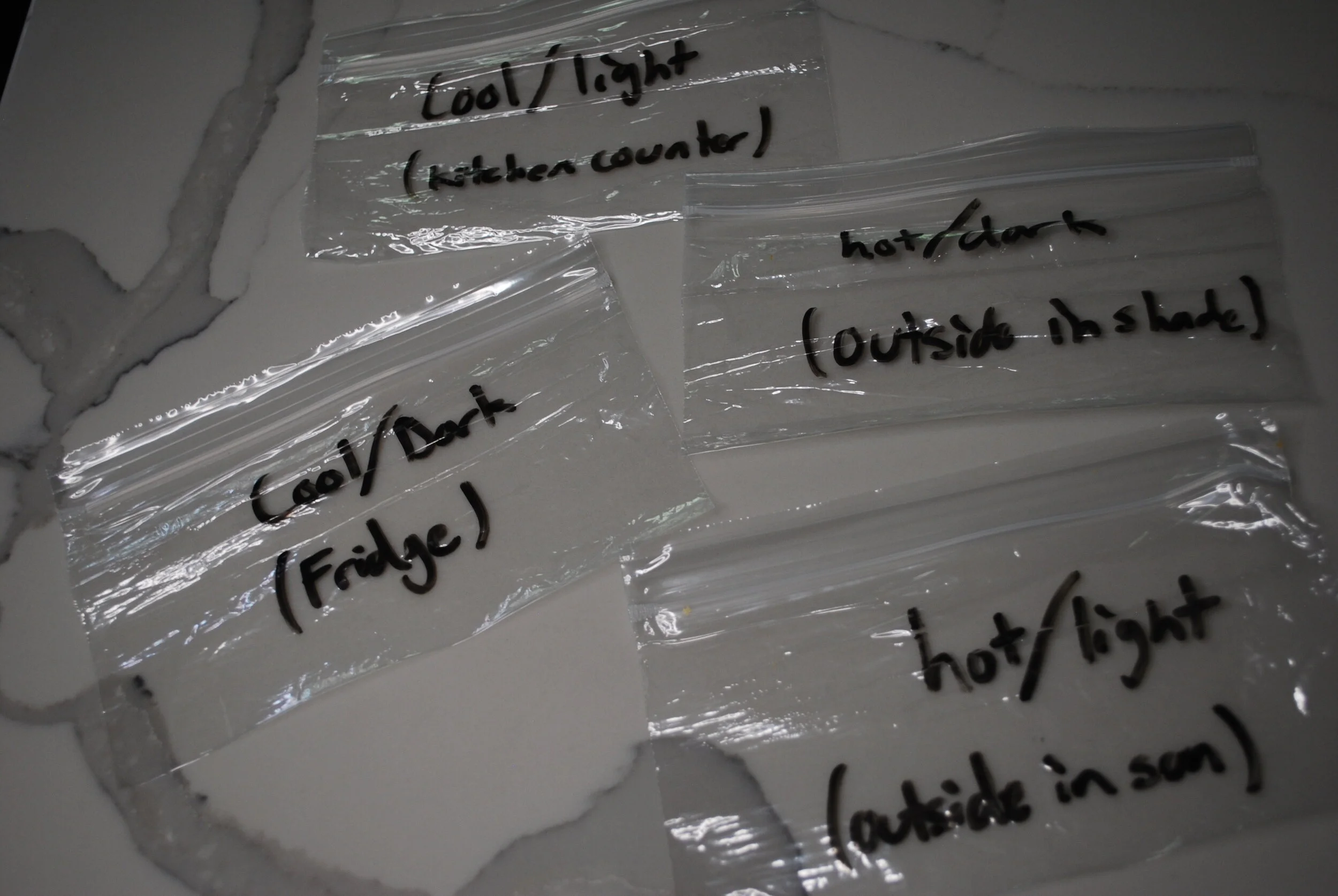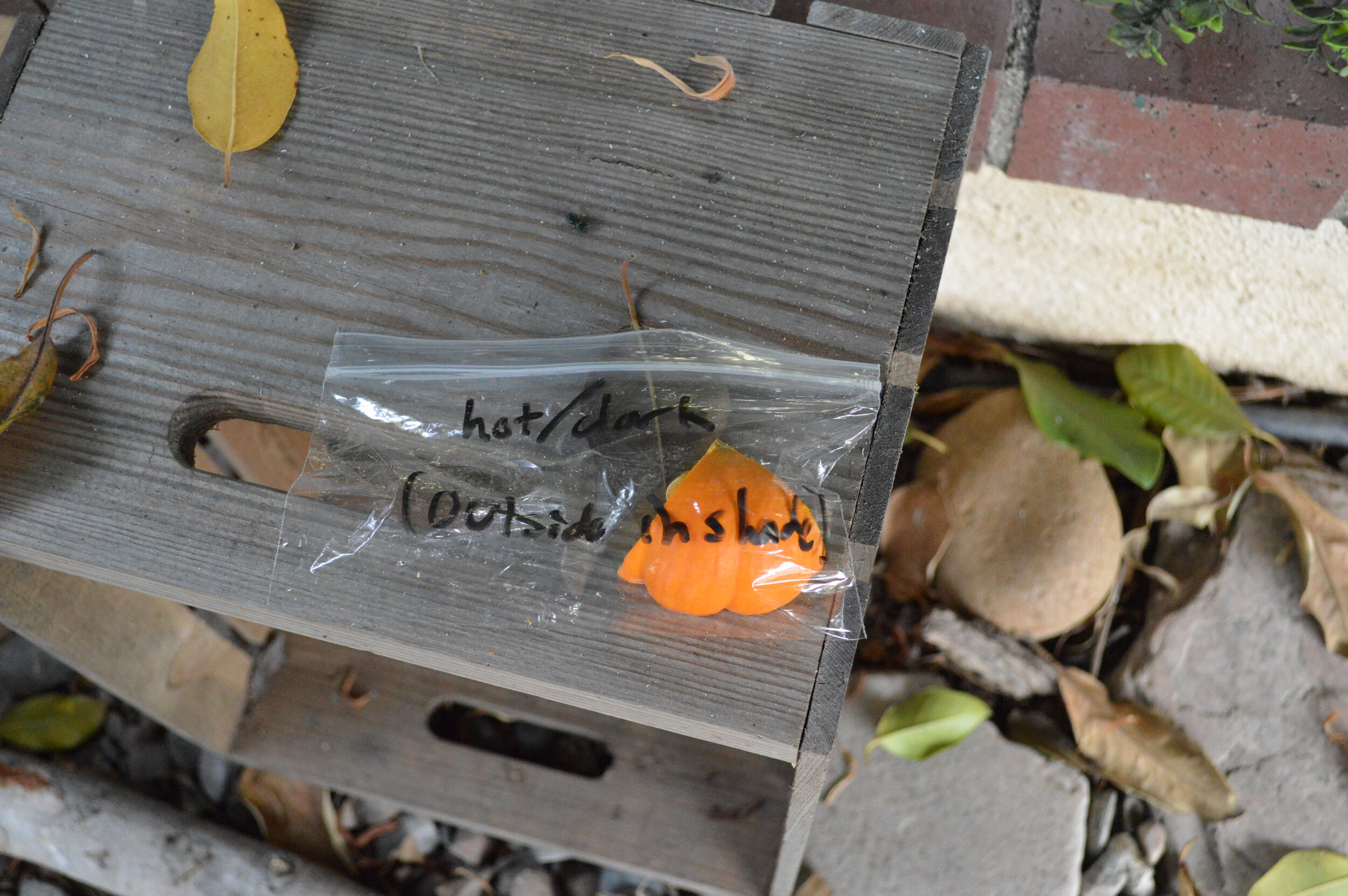Pumpkin Petri Dish
Learn about the way microorganisms survive and reproduce by creating a Petri dish sample! There’s a whole world of life unseen!
Standards included in this lesson: NGSS K-LS1-1, NGSS K-ESS3-1, NGSS 3-LS1-1, NGSS 3-LS4-3, NGSS 3-LS4-4, NGSS 5-LS2-1, CCSS.MATH.CONTENT.K.CC.A.1
Materials
Pumpkin or piece of pumpkin
Ziploc Bags
Marker for labeling bags
Paper or this Printable Chart to keep track of data
Pen or pencil
Procedure
Step 1
Cut a pumpkin into pieces of uniform size to put into different ziploc bags. Each piece will represent different trial conditions, so you can decide how many you want.
Step 2
Label the bags to represent each of your conditions. Then, put a piece of pumpkin in each bag. Close the ziploc bags most of the way to ensure that air can still enter.
Step 3
Place individual bags in different areas (sunny areas, warm areas, shady areas, etc.) and make sure to label each bag.
Step 4
Make a prediction! Which pumpkin do you think will grow the most mold?
Step 5
Each day look at the pumpkin samples and record how much mold is in each sample (You can do this by assigning numbers out of 10 or just describing the state of the mold).
Step 6
Record and compare your data!
Science Explanation
Kindergarten - 2nd Grade . . .
- NGSS Standards: NGSS K-LS1-1 | NGSS K-ESS3-1
- All living things need food in order to grow. This is true for animals like us humans, and plants as well.
- However, plants differ in that they can create their own food through a process called photosynthesis.
- The mold that we are growing on our pumpkins is another example of a living thing that needs food in order to grow.
- What do you think might be the source of food for this mold? (Answer: The pumpkin)
- Because living things need food, water, air, and other specific resources, they typically live in areas that contain the resources that they need.
- Bacteria and mold like to grow in moist, warm, and dark areas, because these conditions make their reproductive processes faster and more successful
- Knowing this preferred environment, which location for your pumpkin petri dish do you think will be the most successful?
3rd Grade - 5th Grade . . .
- NGSS Standards: NGSS 3-LS1-1 | NGSS 3-LS4-3 | NGSS 3-LS4-4 | NGSS 5-LS2-1
- All living organisms reproduce in order to prevent extinction. This is true for animals such as rabbits or monkeys, as well as plants like flowers.
- When bacteria or mold is in small numbers, it is so small that we cannot see it.
- We only end up being able to see mold or bacteria after it has reproduced millions of times.
- At what day did you begin to see bacteria or mold?
- Did the mold grow faster or slower after you first spotted it? (Answer will vary based on experimenter, but the likely answer is faster)
- Another important aspect of life for organisms is the environment or habitat.
- A favorable environment will allow organisms to survive and reproduce, while an unfavorable environment will prevent survival.
- What would you consider to be a favorable environment for humans? (Possible answer: Inside of an air conditioned house with food and water)
- What would you consider to be an unfavorable environment for humans? (Possible answer: In a hot desert with no food or water)
- Based on the results of your experiment, what did you find to be the most favorable environment for the mold/bacteria? (Possible answer: Hot and dark location)
- The reason that this is the most favorable environment for mold and bacteria is because heat helps the proteins in the bacteria to function at a faster rate, allowing the organisms to reproduce more quickly. Moisture/humidity also plays an important role in the environment for bacteria and mold.
- In the realm of the entire environment, mold, like the mold that we grew, plays a vital role known as a decomposer.
- Decomposers take the role of decomposing dead plants or animals, digesting them, and putting the remaining nutrients back in the soil to aid the growth of plants, or producers.
- Can you think of another example of a decomposer? (Answer: Mushrooms)
- In our experiment, what was the mold decomposing? (Answer: The pumpkin)
Math Extensions
Kindergarten . . .
- How many pieces of pumpkin did you cut? (Answer will vary based on experimenter)
- How many different areas did you use for this experiment? (Answer will vary based on experimenter)
- How many days did it take before you started to see mold on the pumpkin? (Answer will vary based on experimenter)
- CCSS.MATH.CONTENT.K.CC.A.1
Written by Ethan Kirgan Inspired by: Home Science Tools





